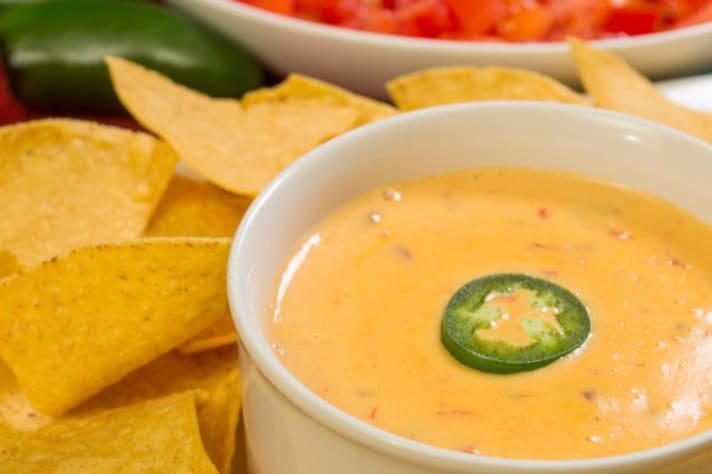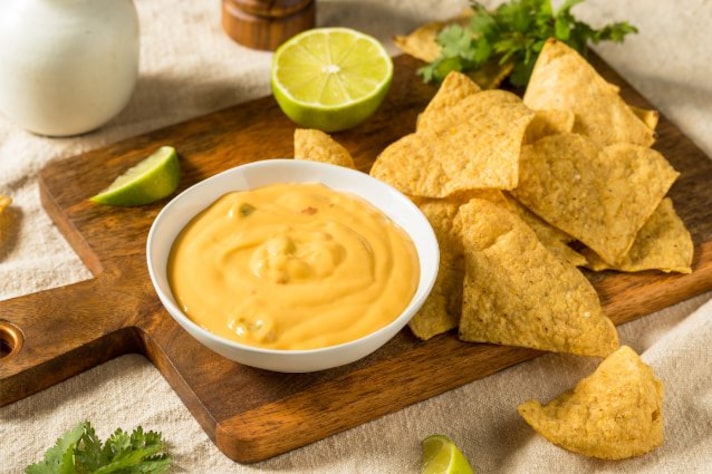
Football season is back, and let’s be honest—what’s better than watching the game from the comfort of your couch with a bowl of chips and a dip that’s all yours? And not just any dip—cheese sauce, of course. But imagine this: you reach for a chip, dive into that cheese sauce, and instead of a smooth, velvety coating, you’re met with a grainy, clumpy mess. Yikes. Now, what do you do? Can you save it, or is your cheese sauce (and your game-day snack) doomed?
Why Does Cheese Sauce Curdle?
Cheese sauce, like many dairy-based sauces, has a delicate balance that can easily go wrong. When making cheese sauce, the goal is to get the cheese to melt smoothly, blending into the liquid without separating. But too much heat, not enough fat, or the wrong cheese can cause things to curdle. Essentially, the fats and proteins in the cheese break apart, leading to that dreaded grainy texture. You’ll usually spot curdling as the sauce starts to look lumpy or oily, rather than smooth and creamy. Once you see those signs, you know your cheese sauce is heading in the wrong direction.

Can You Save Curdled Cheese Sauce?
First things first: yes, curdled cheese sauce can sometimes be saved! And the good news is, it’s usually still safe to eat—just not as appetizing in its original state. Curdling happens when the fat in the cheese separates from the water, but it doesn’t mean your sauce is spoiled. If it tastes fine, you’re still in the clear. However, if your sauce has an unpleasant, sour smell or taste, it’s best to toss it. But if it’s just a texture issue, don’t despair—you can bring it back from the brink!
How to Save Curdled Cheese Sauce
Now, to the real question—how do you save curdled cheese sauce? The key here is gentle heat and some finesse. First, try removing the sauce from the heat immediately; continued high heat will only make things worse. Once off the heat, whisk in a tablespoon or two of warm milk or cream. The extra liquid can help smooth things out, as it dilutes the proteins that are clumping together. If you’re still seeing lumps, you can even try adding a bit of cornstarch or flour slurry (a mix of starch and cold water) to help thicken and smooth the sauce.
Another method is to add an acid, like lemon juice or vinegar. A small splash can help re-emulsify the fats, bringing the sauce back to its creamy consistency. Just be careful—too much acid can affect the flavor, so start with a tiny amount and whisk it in gradually.

Grainy Cheese Sauce: Is There Any Hope?
Grainy cheese sauce isn’t quite the same as curdled, but it’s just as frustrating. Graininess often comes from using cheese that’s too sharp or too low in fat. The best way to prevent this is by choosing cheeses that melt well—think mild cheddar, Monterey Jack, or Gruyère. But if you’re already dealing with a grainy sauce, you can sometimes save it by whisking in a bit more fat. Adding a tablespoon of butter or cream and giving it a good whisk might help smooth out the grainy texture. If that doesn’t do the trick, you can try straining the sauce through a fine mesh sieve to remove the clumps. It’s not a guaranteed fix, but it can help salvage the sauce in a pinch.
;Resize,width=767;)
